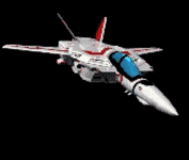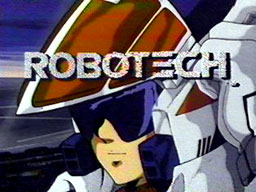
Robotech is an American science fiction franchise that began with an 85-episode anime television series produced by Harmony Gold USA in association with Tatsunoko Production; it was first released in the United States in 1984.
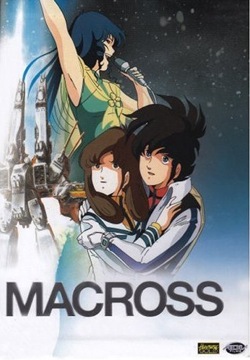
Super Dimension Fortress Macross is an anime television series from 1982. According to story creator Shoji Kawamori, it depicts "a love triangle against the backdrop of great battles" during the first Human-alien war. It is the first part of: The Super Dimension trilogy and the Macross franchise.

Macross is a Japanese science fiction mecha anime media franchise/media mix, created by Studio Nue and Artland in 1982. The franchise features a fictional history of Earth and the human race after the year 1999, as well as the history of humanoid civilization in the Milky Way. It consists of four TV series, four movies, six OVAs, one light novel, and five manga series, all sponsored by Big West, in addition to 40 video games set in the Macross universe, two crossover games, and a wide variety of physical merchandise.
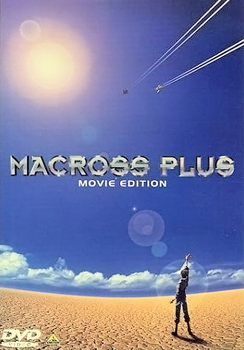
Macross Plus is a four-episode anime OVA and theatrical movie in the Macross series. It was the first sequel to the original Macross television series that took place in the official timeline. Plus was a groundbreaking combination of traditional cel and computer-generated animation at the time of its release, paving the way for the incorporation of more computer-generated imagery in Japanese animation.

The Zentradi are a fictional, militaristic race of alien, humanoid giants and often the main antagonist in Macross media mix and its Robotech (1985) cartoon adaptation.
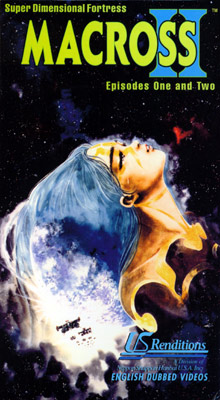
Super Dimensional Fortress Macross II: Lovers Again is a six episode OVA in the Macross franchise. It was the first installment of Macross to feature a new cast of characters. Macross II was produced by Big West, with no involvement from the original series creators from Studio Nue or the original series animators from Tatsunoko Production.

Shōji Kawamori is a Japanese anime creator and producer, screenwriter, visual artist, and mecha designer. He is best known for creating the Macross mecha anime franchise and the Diaclone toyline, which were in turn the basis for the Robotech and Transformers franchises, respectively. He is also known for creating The Vision of Escaflowne anime series. He pioneered several innovative concepts in his works, such as transforming mecha and virtual idols. His work has had a significant impact on popular culture, both in Japan and internationally.

Hikaru Ichijyo is one of the main fictional characters of the Macross Japanese anime series. His voice actor was Arihiro Hase. After the death of Arihiro Hase in 1996, he was voiced by Kenji Nojima in the PlayStation 2 Macross video game from 2003. In the English dub of the series produced by ADV Films, he is voiced by Vic Mignogna.
The Robotech Defenders are a line of scale model kits released by Revell during the early 1980s with an accompanying limited comic series published by DC Comics. Contrary to what their name seems to imply, the "'Robotech Defenders'" are not part of the Robotech anime universe adapted by Carl Macek and released by Harmony Gold USA, but they did adopt the same moniker and logo.

The Super Dimension Fortress Macross: Do You Remember Love? is a 2D shoot 'em up adaptation of the 1984 anime film of the same title, released exclusively in Japan on the Sega Saturn in 1997, the Sony PlayStation in 1999 and the PlayStation 3 in 2012. The Saturn version was released to coincide with the 15th anniversary of the Macross franchise. Packaged in two CDs, the game features video footage of the original film plus all-new animated sequences.
Takatoku toys was a Japanese toy company active during the 1970s and early 1980s. While responsible for many robots, action-figures and vehicles, they are today mainly known for making the original Macross toys.
Toynami is an American toy company based in Van Nuys, California. Founded in 2000 by George Sohn, Toynami is primarily focused on anime licenses for specialty retailers and collectors in the North American market. The company's name is a portmanteau of the words "toy" and "tsunami".

Super Dimension Fortress Macross was released for the Famicom in 1985 by video game company Namco and is based on the popular anime television series of the same name. The game is a side-scrolling shoot 'em up in which the player controls a transformable VF-1 Valkyrie variable fighter in an unending battle against an invading race of giant humanoid aliens known as the Zentradi.
Mecha anime and manga, known in Japan as robot anime and robot manga, are anime and manga that feature robots (mecha) in battle. The genre is broken down into two subcategories; "super robot", featuring super-sized, implausible robots, and "real robot", where robots are governed by realistic physics and technological limitations.

Macross Ace Frontier is a shooting game developed by Artdink for the PlayStation Portable. The game is based on Studio Nue's popular Macross series, one of which is known in the West as the first generation of Robotech. It features original elements as well as characters, mechanics, episode plots and BGM borrowed from 1982's The Super Dimension Fortress Macross original TV series, the 1994 Macross Plus OVA series, the 1994 Macross 7 TV series and the 2008 Macross Frontier TV series, as well as incorporating more elements from the 1984 Macross: Do You Remember Love? feature film and the 2002 prequel OVA series Macross Zero.

Space Gundam V is a South Korean animated film directed by Kim Cheong-gi, released on July 21, 1983. Despite its title, the series is not related to Mobile Suit Gundam. It is known for incorporating an unlicensed version of the VF-1J Valkyrie of Macross fame and the heroic elements of Brave Raideen.

Astro Plan, known in China as Space Adventures and informally in Japan as Star Field War Record Astro Plan, is a science fiction mecha animated series created by Guangzhou-based toy firm Xing Yuan. Hailed as "China's first sci-fi animation", the series premiered on Chinese television on January 16, 2010, through Hunan TV's Golden Eagle Channel and ended in mid-February with a total of 26 episodes.
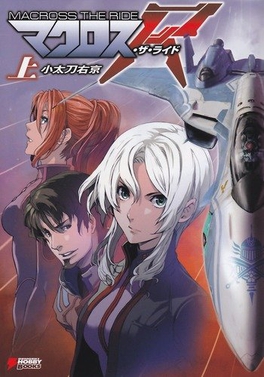
Macross The Ride or Macross R is a light novel series published in the Dengeki Hobby Magazine, a Japanese model kit magazine. It is based on the Macross sci-fi mecha series. It was serialized from December 2010 until November 2011.

Super Spacefortress Macross is a 1992 vertically scrolling shooter arcade video game developed NMK and published by Banpresto. Based upon the 1984 anime film Macross: Do You Remember Love?, it is the first arcade entry in the Macross franchise. In the game, the players control the VF-1 Valkyrie variable mecha fighters, piloted by Hikaru Ichijyo and Max Jenius, in a battle against the Zentradi alien race.

